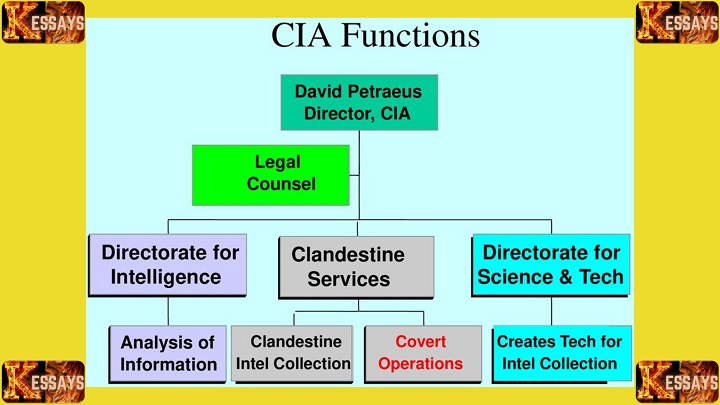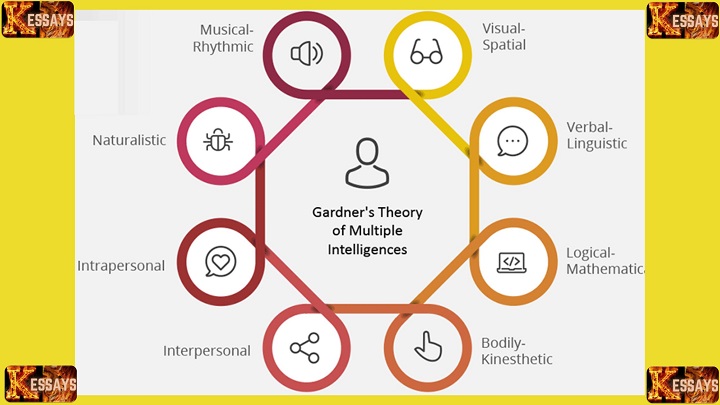Introduction
In today's information-driven world, the ability to gather and analyze intelligence is of utmost importance for governments, businesses, and various organizations. Intelligence-gathering tools are pivotal in collecting and processing vast amounts of data to derive valuable insights and make informed decisions. This essay explores the significance of intelligence-gathering tools, their key features, and their impact on strategic decision-making.
-
The Role of Intelligence Gathering Tools in Modern Society
- Intelligence gathering tools are crucial for modern society, supporting national security, counterintelligence, law enforcement, and corporate intelligence.
- Signals Intelligence (SIGINT) tools focus on intercepting and analyzing communication signals to monitor potential threats and track criminal activities.
- Human Intelligence (HUMINT) tools involve gathering information through human sources like undercover agents and informants, enabling access to vital intelligence.
- Geospatial Intelligence (GEOINT) tools utilize geographic information systems and satellite imagery for monitoring troop movements, natural disasters, and border security.
- Open Source Intelligence (OSINT) tools gather information from publicly available sources like social media and news articles, providing valuable insights for situational awareness.
- Cyber Intelligence (CYBINT) tools monitor and analyze digital activities, detecting cyber threats and protecting digital assets and networks.
- Intelligence gathering tools aggregate and integrate data from diverse sources, creating a comprehensive view of the intelligence landscape.
- Data visualization techniques in intelligence tools aid decision-makers in identifying patterns, trends, and correlations in complex information.

- Real-time monitoring and automated alerts in intelligence tools ensure prompt responses to emerging threats or opportunities.
- Predictive analytics in intelligence tools help forecast future scenarios based on historical data, enabling proactive decision-making.
- Top-tier intelligence tools incorporate robust encryption and authentication mechanisms to safeguard sensitive data from unauthorized access.
- These tools empower governments, law enforcement agencies, and businesses to gather and analyze vast amounts of data effectively.
- Intelligence gathering tools enhance situational awareness and risk management for informed decision-making.
- They provide a competitive advantage by offering insights into market trends, competitor activities, and customer preferences.
- Effective resource allocation is achieved through intelligence tools, guiding investments in areas with high potential returns.
- In the digital age, CYBINT tools play a crucial role in safeguarding digital assets and networks from cyber threats.
- The visualization of data by intelligence tools facilitates easier comprehension of complex information.
- Real-time monitoring and alerts enable timely responses to emerging threats and opportunities.
- Predictive analytics aids decision-makers in proactive planning and response to challenges and opportunities.
- Robust security measures in intelligence tools protect sensitive data, ensuring national security and safeguarding corporate interests.
- The integration of data from various sources allows intelligence tools to provide a comprehensive intelligence landscape.
- Intelligence gathering tools are indispensable for strategic decision-making in various domains.
- The capabilities of SIGINT, HUMINT, GEOINT, OSINT, and CYBINT tools contribute to comprehensive intelligence analysis.
- Governments, law enforcement, and businesses benefit from the diverse features of intelligence gathering tools.
- Overall, intelligence gathering tools significantly contribute to enhancing security and informed decision-making in modern society.
-
Categories of Intelligence Gathering Tools
-
Signals Intelligence (SIGINT) Tools:
- Focus on intercepting and analyzing communication signals, including radio, telecommunication, and internet traffic.
- Utilize advanced surveillance systems and cryptographic analysis software.
- Crucial in monitoring potential threats and gathering valuable information.
-
Human Intelligence (HUMINT) Tools:
- Involve gathering information through human sources.
- Include undercover agents, informants, and diplomatic contacts.
- Rely on interpersonal skills and human interaction to obtain critical data.
-
Geospatial Intelligence (GEOINT) Tools:
- Utilize geographic information systems (GIS) and satellite imagery.
- Analyze locations to derive intelligence.
- Instrumental in monitoring troop movements, natural disasters, and border security.
-
Open Source Intelligence (OSINT) Tools:
- Gather information from publicly available sources.
- Sources include social media, websites, and news articles.
- Provide valuable insights into public sentiments, emerging trends, and potential threats.
-
Cyber Intelligence (CYBINT) Tools:
- Focus on monitoring and analyzing digital activities.
- Detect cyber threats, hacking attempts, and malware.
- Help organizations safeguard their digital assets and networks.
Each of these categories plays a significant role in intelligence gathering, contributing to a comprehensive understanding of potential risks, opportunities, and challenges. These tools are indispensable for decision-makers in various fields, including national security, law enforcement, corporate intelligence, and more. By combining the capabilities of these diverse tools, entities can make informed decisions and stay ahead in today's data-driven world.

-
Key Features of Intelligence Gathering Tools
a. Data Aggregation and Integration:
- Ability to collect vast amounts of data from multiple sources.
- Capability to integrate disparate datasets for a comprehensive intelligence landscape.
b. Data Visualization and Analysis:
- Utilization of data visualization techniques for better comprehension of gathered data.
- Helps decision-makers identify patterns, trends, and correlations efficiently.
c. Real-time Monitoring and Alerts:
- Provides real-time monitoring capabilities.
- Enables immediate responses to emerging threats or opportunities.
- Automated alerts notify stakeholders when predefined triggers are met.
d. Predictive Analytics:
- Equipped with predictive analytics to forecast future scenarios.
- Uses historical data for proactive decision-making.
e. Encryption and Security Measures:
- Prioritizes security to safeguard sensitive data.
- Employs robust encryption and authentication mechanisms.
- Ensures protection against unauthorized access.
These key features enable intelligence gathering tools to process and analyze large volumes of data effectively, empower decision-makers with valuable insights, and enhance situational awareness, risk management, and strategic decision-making in various fields such as national security, law enforcement, corporate intelligence, and more.
-
The Impact of Intelligence Gathering Tools on Strategic Decision-Making
a. Improved Situational Awareness:
- Intelligence tools provide decision-makers with a comprehensive understanding of potential risks and opportunities.
- Holistic view allows for proactive strategies in addressing challenges effectively.
- Enables timely and informed decision-making based on real-time data.
b. Enhanced Risk Management:
- Identification and analysis of potential threats through intelligence tools.
- Facilitates the implementation of risk mitigation measures.
- Helps organizations safeguard their interests and assets.
c. Competitive Advantage:
- In the business realm, intelligence gathering tools provide valuable insights.
- Information on market trends, competitor activities, and customer preferences.
- Empowers businesses to make informed decisions and stay ahead of competitors.
d. Effective Resource Allocation:
- Intelligence tools aid in optimizing resource allocation.
- Guiding organizations to invest in areas with high potential return on investment.
- Prevents wasteful spending and maximizes efficiency.
e. Proactive Decision-Making:
- Predictive analytics in intelligence tools allow for future scenario forecasting.
- Decision-makers can plan and respond proactively to potential challenges and opportunities.
f. Improved National Security:
- Intelligence tools are vital in enhancing national security and defense.
- Enable governments to monitor and counter potential threats.
- Support in planning and executing strategic military operations.
g. Identifying Emerging Trends:
- Intelligence tools help in identifying emerging trends and opportunities.
- Enables businesses to adapt and innovate according to market demands.
h. Real-time Response:
- Real-time monitoring and alerts in intelligence tools enable swift responses to dynamic situations.
- Decision-makers can take immediate actions in critical scenarios.
i. Enhanced Decision Accuracy:
- Data aggregation and integration in intelligence tools provide a comprehensive and accurate view of information.
- Reduces the likelihood of making decisions based on incomplete or biased data.
j. Policy Formulation:
- Intelligence tools aid governments in formulating effective policies.
- Informed by data-driven insights and analysis.
Overall, intelligence gathering tools have a significant impact on strategic decision-making across various sectors. They empower decision-makers with valuable information, enhance situational awareness, and enable proactive approaches to address challenges and seize opportunities. By providing real-time monitoring, predictive analytics, and improved risk management, these tools play a crucial role in ensuring successful outcomes and achieving objectives.

Conclusion
Intelligence gathering tools have become indispensable assets in today's data-driven world. Their diverse capabilities, ranging from SIGINT and HUMINT to OSINT and CYBINT, enable organizations to collect and analyze vast amounts of data efficiently. By improving situational awareness, enhancing risk management, and fostering a competitive advantage, these tools are instrumental in strategic decision-making across various domains. As technology continues to advance, intelligence gathering tools will undoubtedly evolve, offering even more sophisticated capabilities to meet the growing demands of the information age.



Comments are closed!